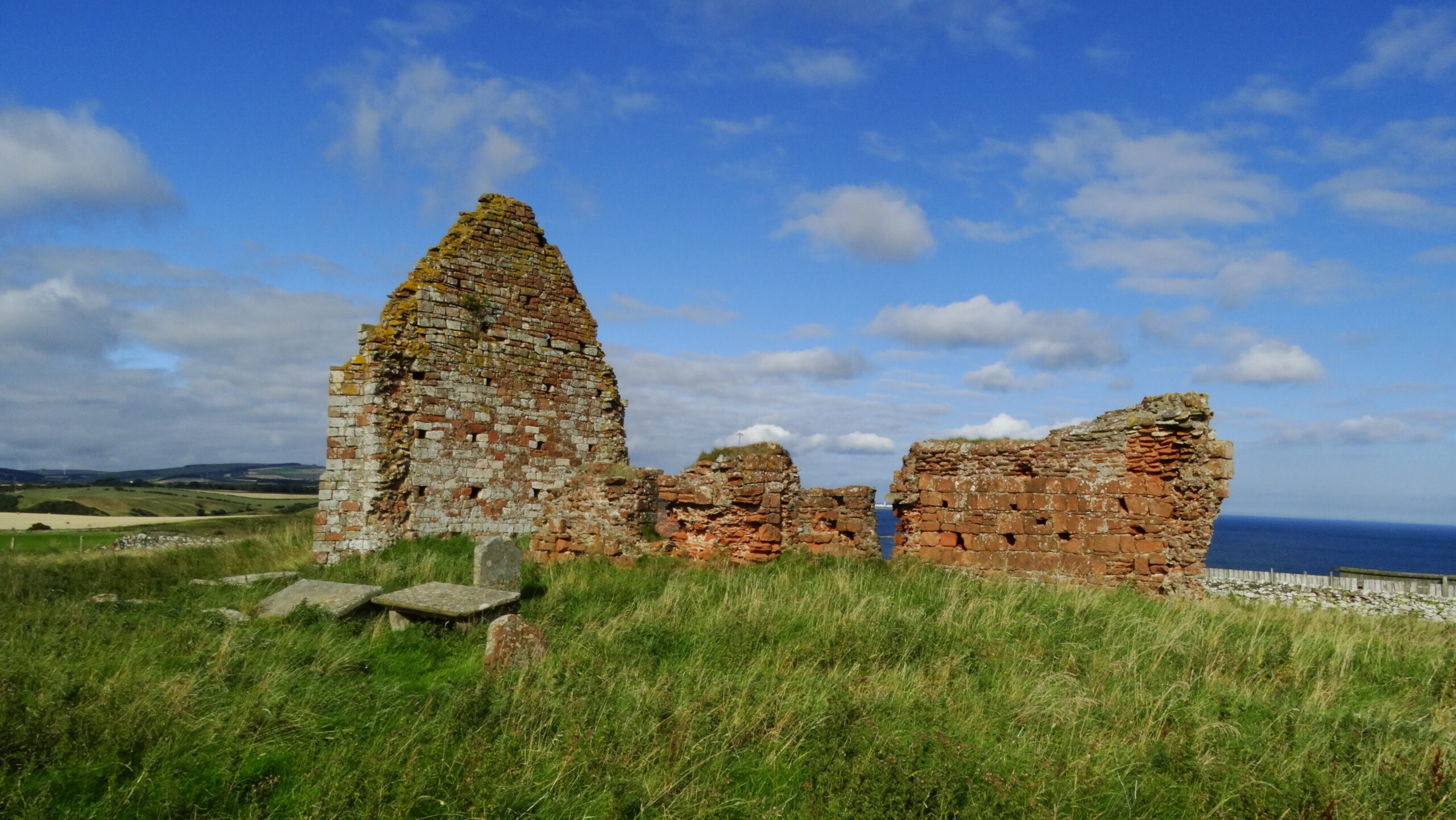header image: © Colin Park
St. Helen’s Church in the Scottish Borders is said to have been founded by three Northumbrian Princesses. Within the grounds are the remains of early medieval carved stones known as hogbacks.
In 2021, AOC undertook excavations and survey at the site of the medieval church and burial ground.
The ruinous remains of St Helen’s Church at Old Cambus sit high on a cliff above the North Sea, close to Cockburnspath in the Scottish Borders. The church is said to have been established by three Northumbrian princesses who sought refuge from a violent war in their home kingdom. Stormy weather prevented them from reaching the Firth of Forth as planned, but they were given shelter by the bishop or prior of nearby Coldingham. They showed their gratitude by building three new churches: St Abb’s at St Abb’s Head, St Bee’s at Dunbar and St Helen’s at Old Cambus. It is recorded that there has been a church at Old Cambus since the 7th century, though the ruinous remains of St Helen’s are certainly much later in date, perhaps 12th century at the earliest.
Amongst the headstones in the graveyard are two hogback stones, early medieval commemorative monuments that generally date to the 10th or 11th centuries. The stones at St Helen’s have been known about for many years, but dense vegetation has made them hard to track down and they have gone undetected in recent surveys.
In January 2021, AOC undertook excavations and survey at the site of St Helen’s Church on behalf of Historic Environment Scotland following a report of possible damage to one of the hogbacks. Both hogbacks were identified, excavated and recorded before being reinstated.
St Helen’s Church has been ruinous for many years, and it is recorded that some of the stone was taken away in the mid-19th century for reuse elsewhere. The chevron detail visible on a handful stones in the west gable most likely represents the recycling of stones from an earlier building. The holes through the wall represent the location of putlogs – timbers built into the wall to support scaffolding during construction. They were sawn off flush with the wall and left in place when construction was complete, but the remains have since decayed, leaving voids behind.









